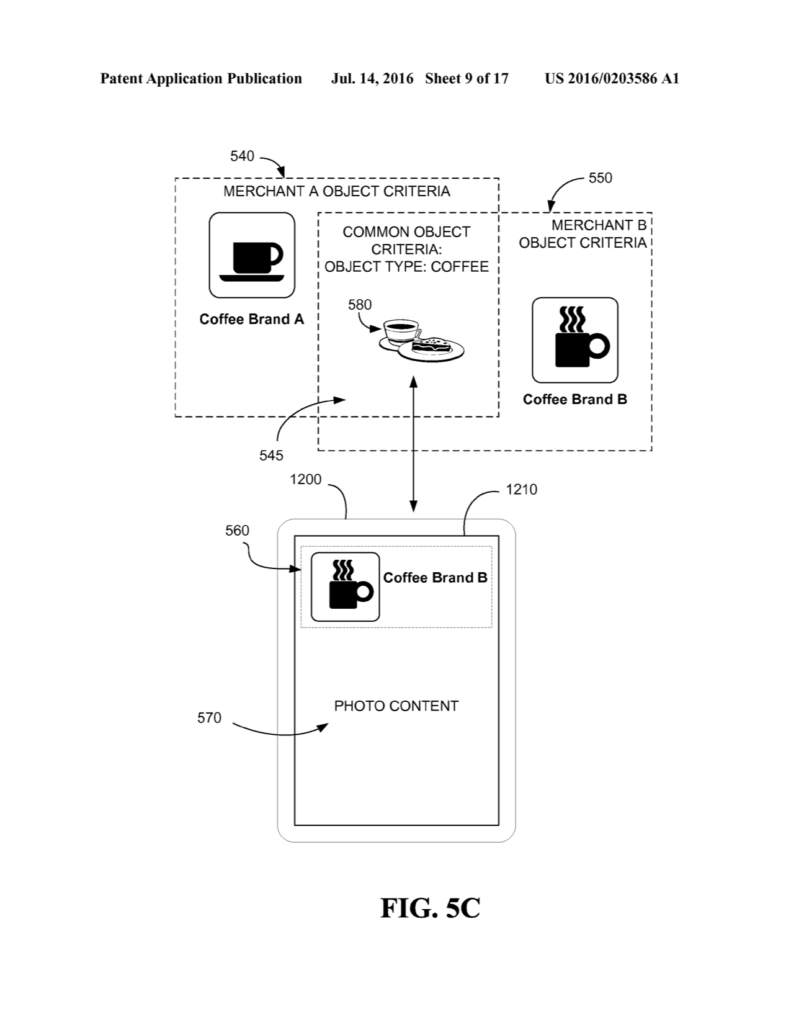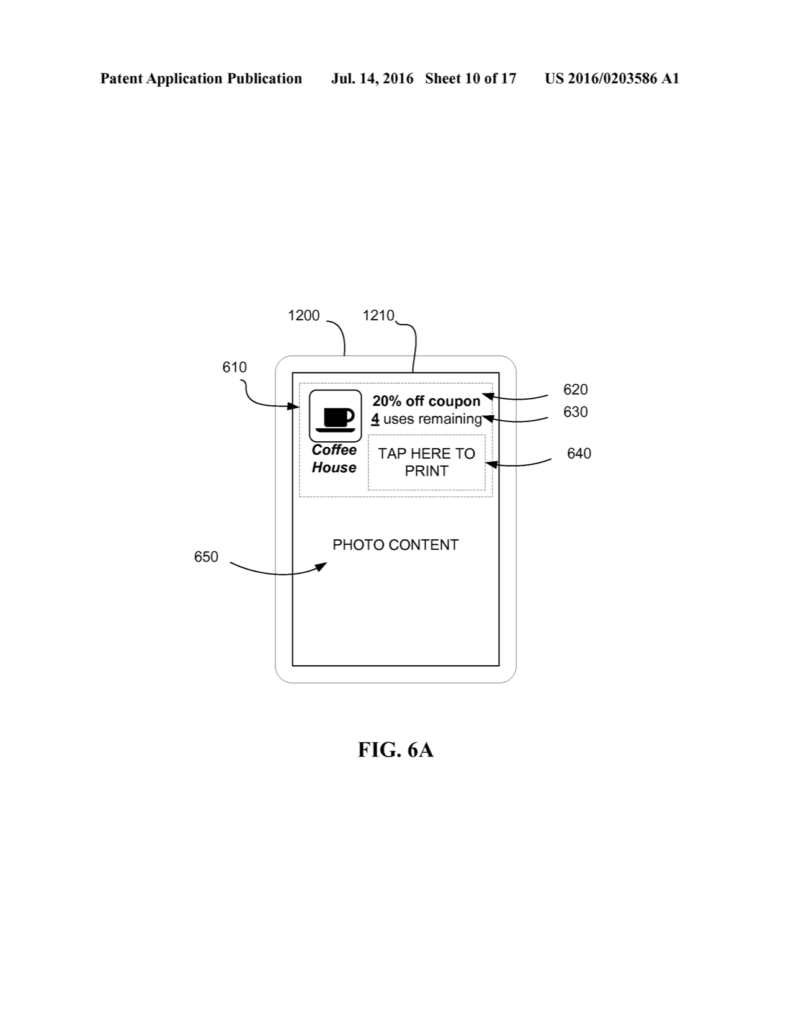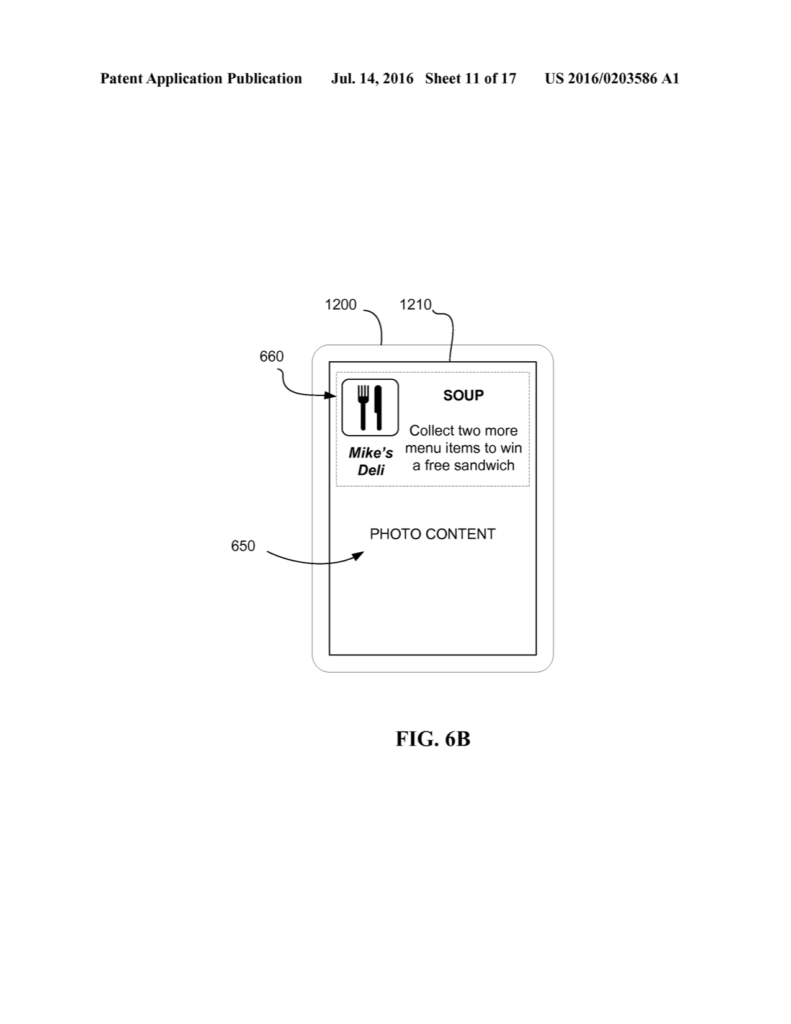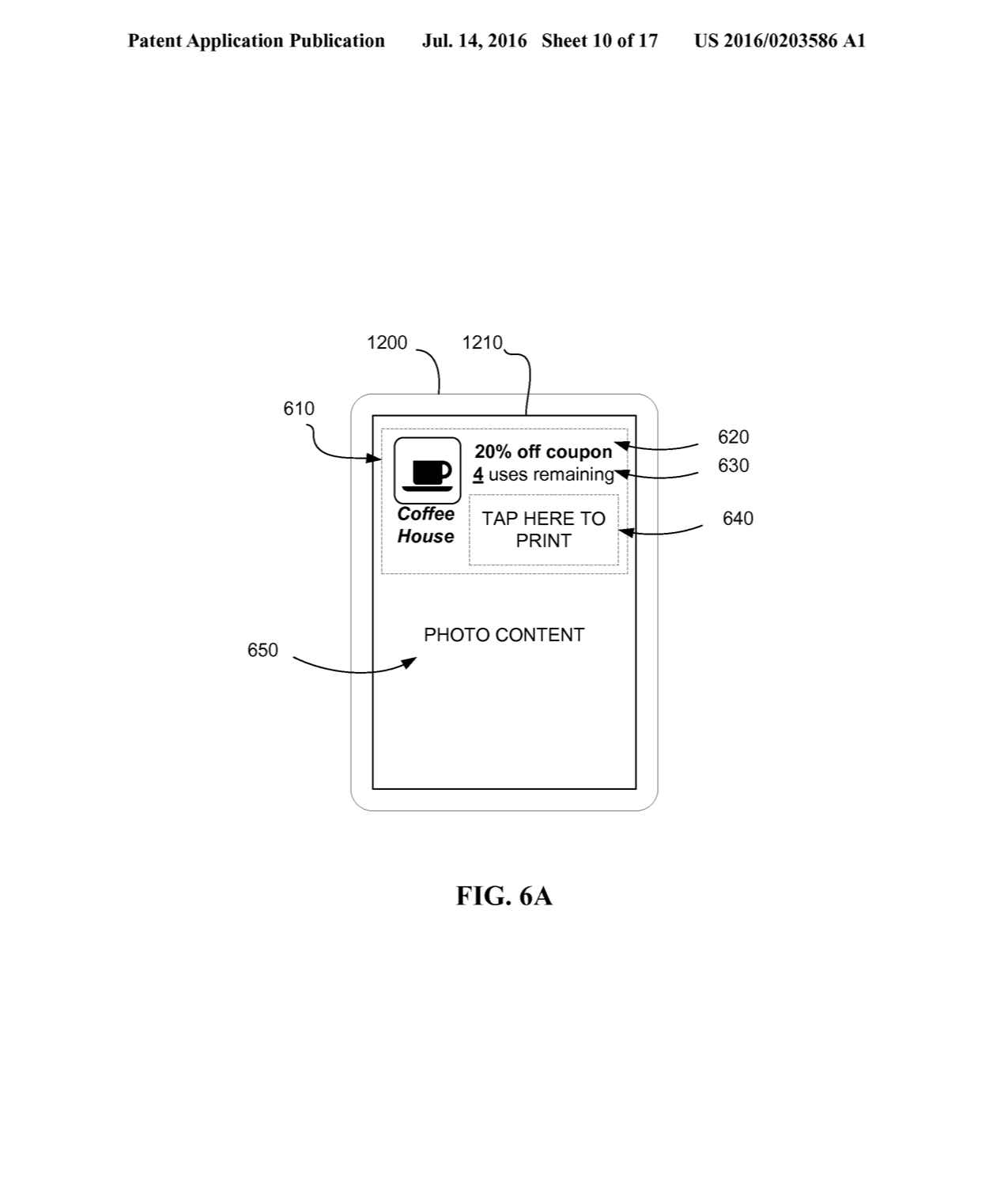Read in: [est_time]
“Hey Spectacles What Am I Looking At?”
The IPO of Snap is imminent, perhaps in the first week of March 2017. There are many questions about the long term profitability of the company. Many see the future of social networks through the lens of classic lifestyle advertising diced and sliced by the nuances of the social graph and psycho-demographic of the users. Of course Snap will have some of this, however Snap will also have something rather unique to the company and the way the users of Snapchat and Spectacles are using the company’s products. Snap will use some very creative ways to invent a completely new advertising modality. Ultimately Snap with Spectacles will move to a form of augmented reality that at minimum identifies objects, surrounding and interacts with a new form of immersive advertising and marketing.
It All Started With A Snapchat Patent
On a warm day on January 9, 2015 in Southern California a group of Snapchat engineers and inventors applied for a patent at the United States Patent And Trademark Office (USTPO) [1]:
OBJECT RECOGNITION BASED PHOTO FILTERS
Abstract
Systems and methods for generating and distributing photo filters are described. A photo filter publication application receives filter data and object criteria and generates a photo filter based on the filter data. The photo filter is associated with satisfaction of the object criteria. A photo filter engine then identifies that a client device has taken a photograph. The photo filter engine then provides the photo filter to the client device based on the photograph including an object that satisfies the object criteria. The photo filter may then be displayed as an option on a user interface of the client device. The object criteria may include associations between an object and a source of image data, for example, a brand of a merchant in which case the associated photo filter may include images associated with the brand of the merchant.
This patent was released by the USTPO on July 14, 2016 and it seemed to have been mostly overlooked. However now that Snap, Inc. has released Spectacles [2] the premise of this patent now takes on new significant use cases:
[0024] Third party entities (e.g., merchants, restaurants, individual users, etc.) may, in one example embodiment, create photo filters for inclusion in the set presented for user selection based on recognition of an object satisfying criteria specified by the creator of the photo filter. For example, a photograph including an object recognized as a restaurant may result in the user being presented with photo filters that overly a menu of the restaurant on the photograph. Or a photograph including an object recognized as a food type may result in the user being presented with photo filters that let the user view information e.g., calories, fat content, cost or other information associated with the food type. Third party entities may also bid (or otherwise purchase opportunities) to have a photo filter included in a set presented to a user for augmentation of a particular photograph. Described below are various systems and methods for implementing the above described photograph enhancements.
~—~
~—~
We can see that in this patent embodiment Snap, Inc. is presenting an entirely unique form of Augmented Reality advertising. This advertising could very well change the way Snapchat users see the world and set the universe of advertising on its ear.

[0069] FIG. 5C shows a diagram illustrating an example of a merchant-based photo filter selected based on a bidding process. The object criteria 540 of merchant A and the criteria 550 of merchant B overlap at common object criteria 545. The mobile device 1200 is used to generate the photo content 570 (e.g., used to takes a picture) in the display 1210 of the mobile device 1200. The photo content 570 includes a recognized object 580 that satisfies the common object criteria 545. A photo filter of the merchant with the highest bid for the common object criteria 545 is published to the mobile device 1200. In the present example, merchant B has outbid merchant A for the common object criteria “object type: coffee”. The common object criteria “object type: coffee” may refer to any object commonly associated with coffee as well as explicit examples of coffee objects such as a cup of coffee or a coffee bean. As such, photo filter 560 of merchant B (associated with a brand of coffee sold by merchant B) is provided and displayed in the display 1210 on top of the photo content 570. The photo filter 560 is based on the uploaded filter data from merchant B. It should be noted that `merchant` in the context of the current example embodiments may include not only entities involved in the trade or sale of merchandise but any other entity as well, including individuals, universities, non-profit organizations, student organizations, clubs, etc.
[0070] FIG. 6A shows a diagram illustrating an example of a photo filter 610 published on the basis of a count of an object type (e.g., satisfies a specified object criteria such as “cup of coffee”) across all of the photographs taken by a mobile device 1200. This count may be processed by count module 326 of photo filter engine 306. For example, the photo filter 610 includes a digital coupon 620 that can be redeemed at a coffee shop “Coffee House”. The photo filter 610 may include dynamic content 630. For example, the dynamic content 630 may include a remaining number of times the coupon can be used. The photo filter 610 may include an action button 640 for executing a related action such as printing the coupon. Furthermore, the photo filter 610 may be provided to mobile device 1200 only after the count for the specified object type (e.g., cups of coffee) has surpassed a specified threshold value uploaded by the merchant (e.g., uploaded filter data) associated with the photo filter 610. The mobile device 1200 displays the photo filter 610 with the photo content 650.

[0071] FIG. 6B shows a diagram illustrating an example of a photo filter 660 published on the basis of a collection of photo filters previously published to a mobile device 1200. In an example embodiment this collection may be processed by collection module 324 of photo filter engine 306. The photo filter 660 can be published to the mobile device 1200 in response to the photo filter publication module 314 determining that a photo filter collection associated with mobile device 1200 has exceeded a minimum number of photo filters a specified type, after which a premium photo filter may be accessed. For example, the collection based photo filter may be used to implement a game at a restaurant (e.g., Mike’s Deli) by providing certain premium photo filters (e.g., a “free sandwich” photo filter) to mobile device 1200 only after the mobile device 1200 has collected the required amount of “menu item” type photo filters associated with Mike’s Deli. In an example, the premium photo filter may be used to obtain discounts and/or prizes at the restaurant, e.g., a free sandwich. The mobile device 1200 displays the photo filter 660 on top of the photo content 650.

Unlimited Advertising And Marketing Use Cases
We can see that there are an abundant number of use cases for this patent. We also can see the augmented reality direction Snap will be taking. This new form of advertising is unique in the fact that it deeply appeals to national brands and local merchants equally. This real world emersion, that just may also interact with computer screens, video screens and traditional television is a massive shift in how Snap’s central cohort of users will be exposed to new products and services.
The Pokemon Go Phenomena Informs Spectacles
The phenomenon of Pokemon Go [3] is the clear example of how massive and rapid a shift to physical world augmented reality can accelerate. Pokemon Go has broken all records and is the Proofcase for Augmented Reality. Pokemon Go also drove more people into local businesses than another system in business history.
It is not clear if Snap, Inc. will gamely Spectacles, however there is some chatter in Southern California that this may already be well in the works. Although there is no built in display screen currently in Spectacles, it may not need to be a necessity at this early stage. They connected iOS device or Android device can be triggered and activated in a manner that surpasses the current use case presented in Pokemon Go where the user is holding the device and looking down. Audio cues in the form of sounds and Voice syntheses can add an additional layer to this augmentation.
There Will Be A Little Voice In A Future Version Of Spectacles
I have stated that 50% of all computer interactions will be via AI assisted Voice [4]. Snap, Inc. with this patent and future versions of Spectacles may very well not only be a part of Visual Augmented Reality but also a form of Voice assisted Augmented Reality.
Along the way it will pay handsomely to Snap, Inc, its advertisers and perhaps it may pay Spectacles users, just to use them…
––––––
[1] Published Applications Database Search Results: [2] Brian Roemmele’s answer to What are Snap, Inc. Spectacles and why are they important? [3] Brian Roemmele’s answer to How important has Pokémon GO been for small businesses? [4] There is A Revolution Ahead and It Has A Voice

Show you are a revolutionary https://tspr.ng/c/show-you-are-a-revolutionary
[amazon_link asins=’1511945133,1542399084′ template=’ProductCarousel’ store=’multiplex-05-20′ marketplace=’US’ link_id=’c6544c7a-f7a0-11e6-ba29-1d9ff9a67f6b’]
~—~
~—~
Subscribe ($99) or donate by Bitcoin.
Copy address: bc1q9dsdl4auaj80sduaex3vha880cxjzgavwut5l2
Send your receipt to Love@ReadMultiplex.com to confirm subscription.


IMPORTANT: Any reproduction, copying, or redistribution, in whole or in part, is prohibited without written permission from the publisher. Information contained herein is obtained from sources believed to be reliable, but its accuracy cannot be guaranteed. We are not financial advisors, nor do we give personalized financial advice. The opinions expressed herein are those of the publisher and are subject to change without notice. It may become outdated, and there is no obligation to update any such information. Recommendations should be made only after consulting with your advisor and only after reviewing the prospectus or financial statements of any company in question. You shouldn’t make any decision based solely on what you read here. Postings here are intended for informational purposes only. The information provided here is not intended to be a substitute for professional medical advice, diagnosis, or treatment. Always seek the advice of your physician or other qualified healthcare provider with any questions you may have regarding a medical condition. Information here does not endorse any specific tests, products, procedures, opinions, or other information that may be mentioned on this site. Reliance on any information provided, employees, others appearing on this site at the invitation of this site, or other visitors to this site is solely at your own risk.
Copyright Notice:
All content on this website, including text, images, graphics, and other media, is the property of Read Multiplex or its respective owners and is protected by international copyright laws. We make every effort to ensure that all content used on this website is either original or used with proper permission and attribution when available.
However, if you believe that any content on this website infringes upon your copyright, please contact us immediately using our 'Reach Out' link in the menu. We will promptly remove any infringing material upon verification of your claim. Please note that we are not responsible for any copyright infringement that may occur as a result of user-generated content or third-party links on this website. Thank you for respecting our intellectual property rights.

